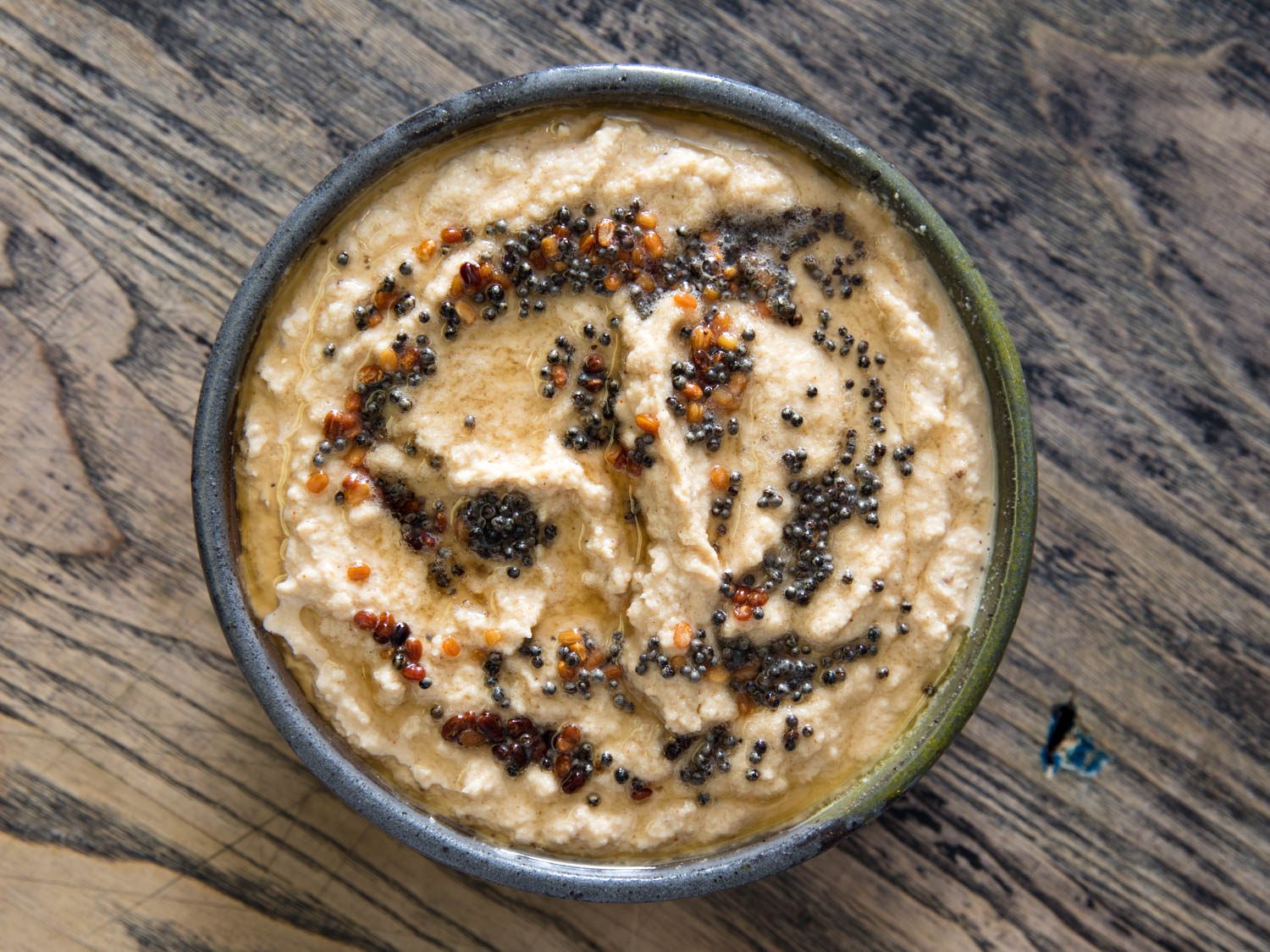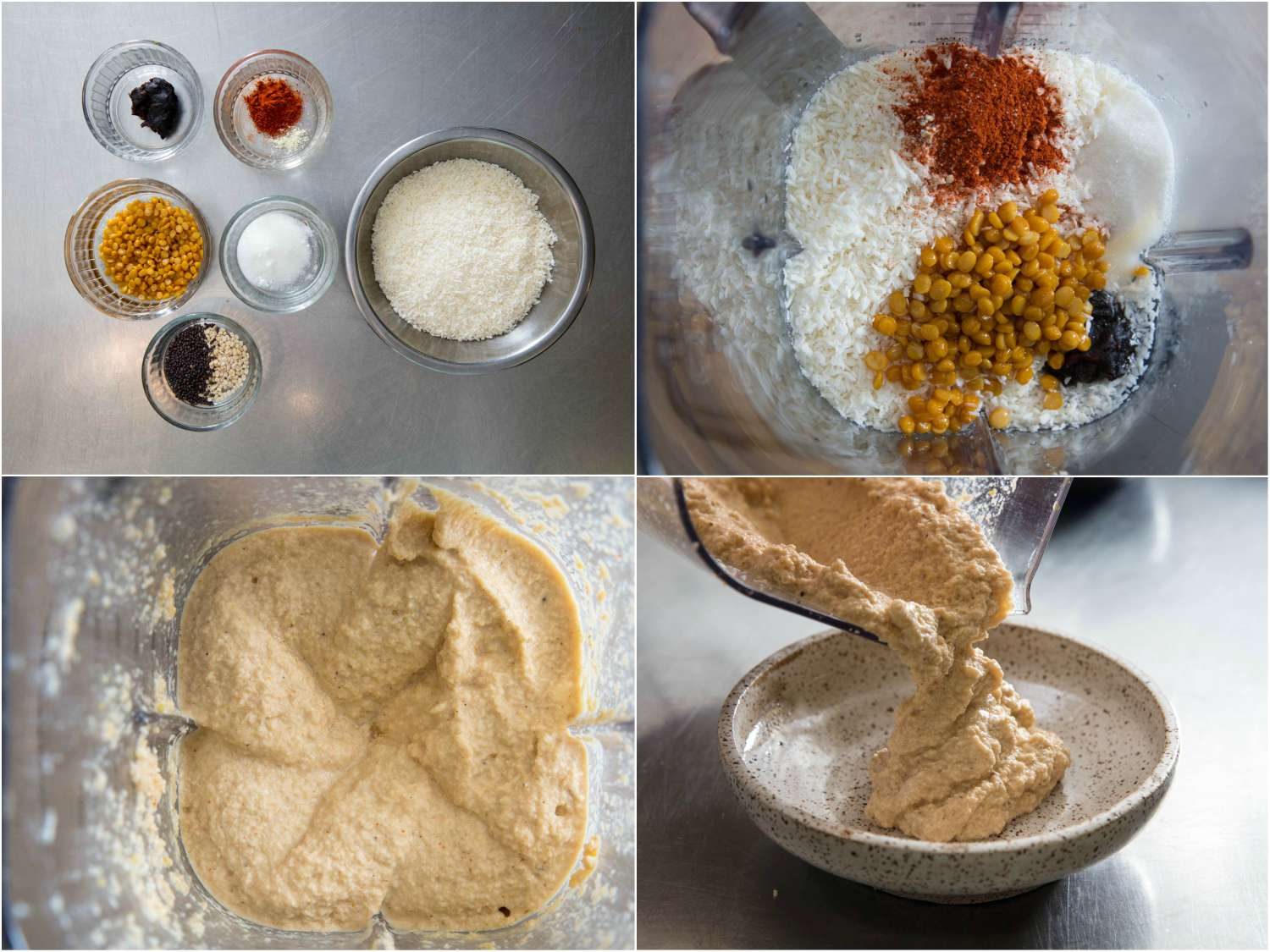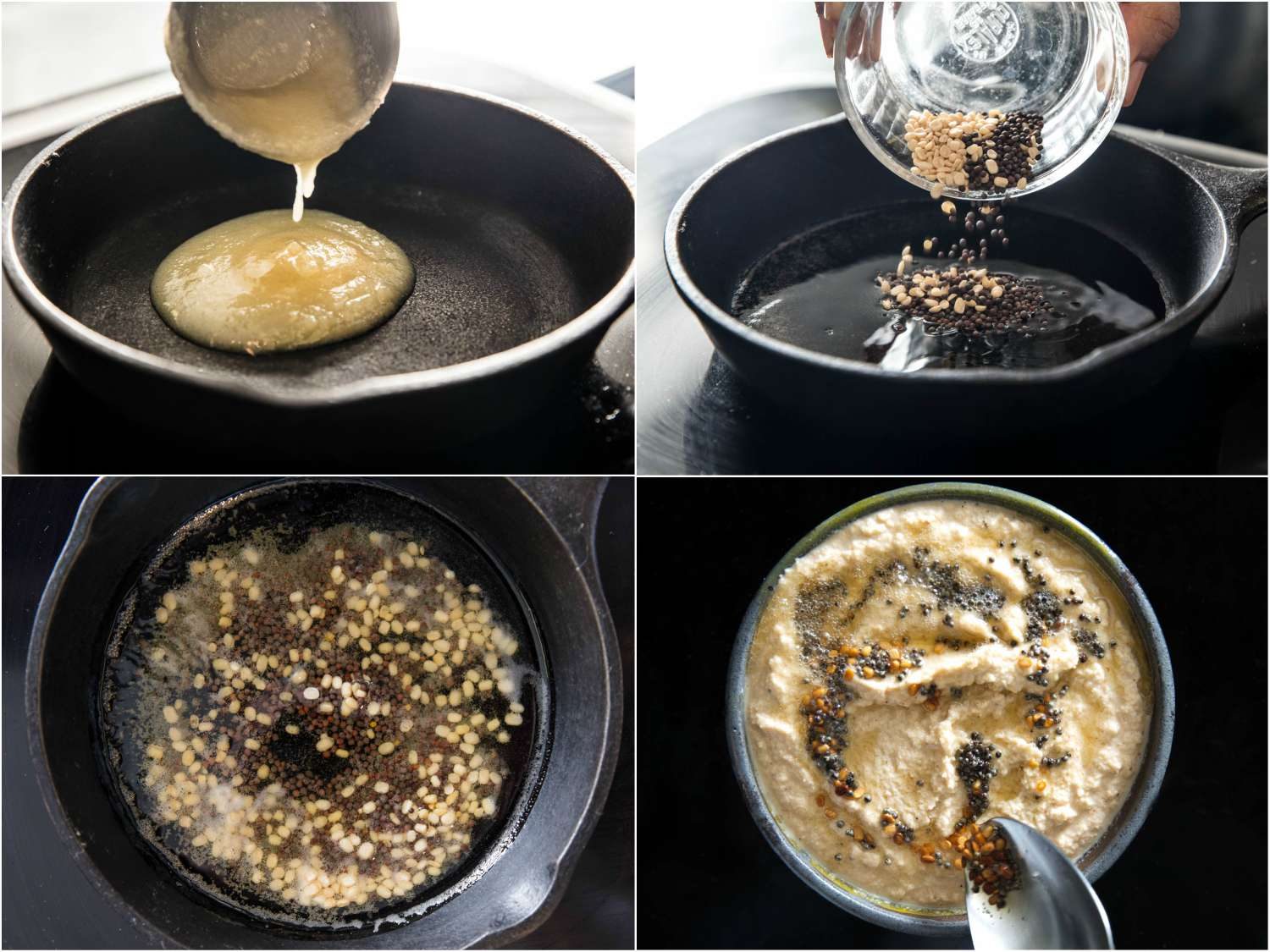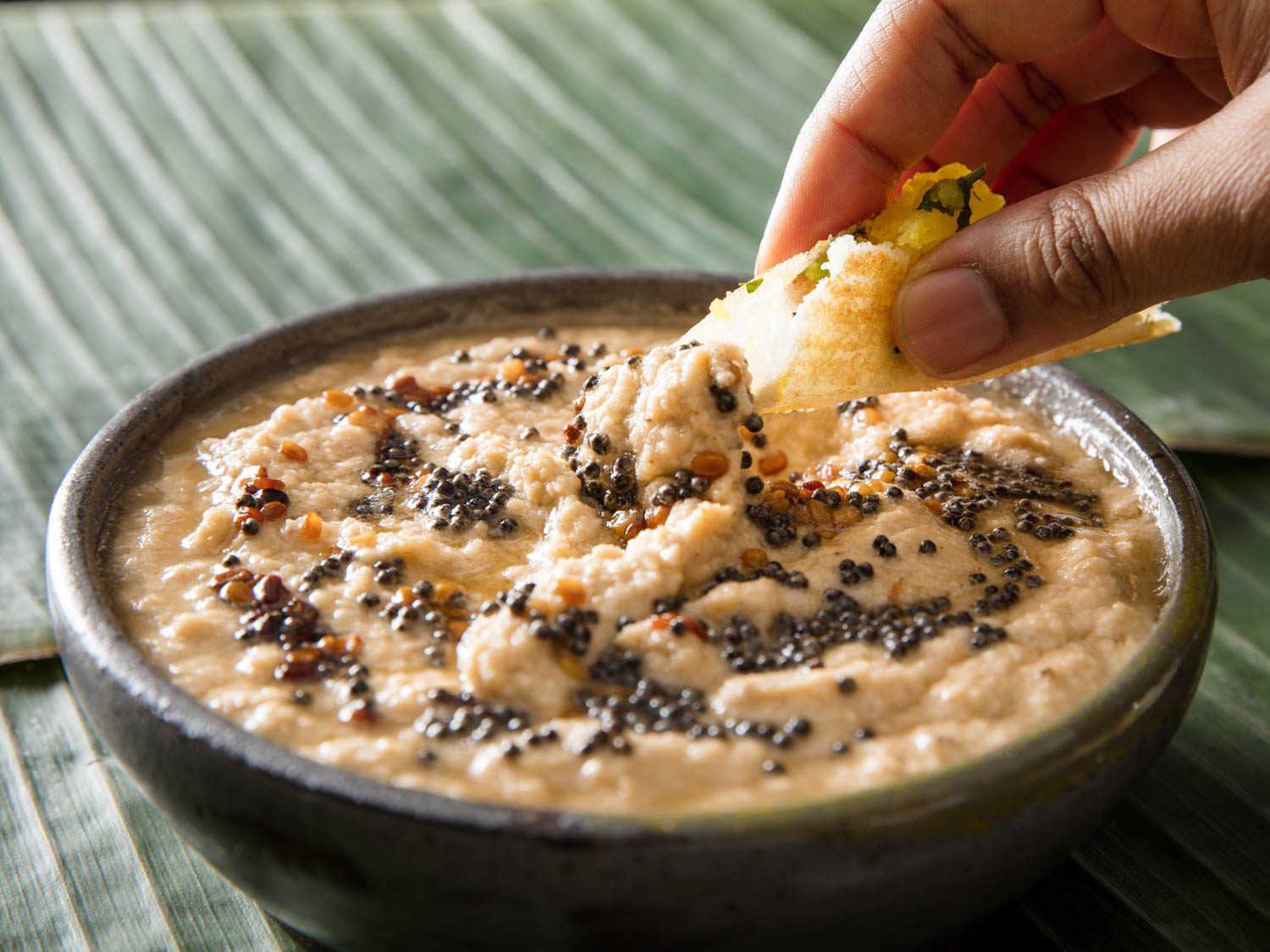
[Photographs: Vicky Wasik]
I’ve always believed it a woeful understatement to call chutney a mere condiment. Condiments are optional, and often even an afterthought. Ketchup on a burger? I can take it or leave it. Wings without blue cheese dressing? I can live with that. But a dosa without chutney? Why even bother!
The colorful bouquet of chutneys found in Indian cuisine are more than just a sidekick to a dish; they’re an attraction all on their own. Many dishes are incomplete without their coordinating chutneys—some chaats are just an excuse to consume as much tamarind and cilantro chutney as possible.
This coconut chutney, simply seasoned with a touch of black mustard seed and tamarind, is the classic served alongside nearly every idli or dosa you can find. Unlike many of the items that fit the traditional definition of a condiment, this chutney is substantial and filling in and of itself, along with being a flavorful addition to any dish. The foundation of any coconut chutney is a smooth paste made from fresh or dried coconut, which is then gussied up with spices and toasted lentils. There are countless variations on this chutney—it can be found with tomato, cilantro, green chilies, and more. Once you’ve made the coconut paste, you can customize it to make it your own and serve it alongside any dish, not just dosai.

For the coconut paste, I start by frying chana dal (yellow split lentils) in ghee until it’s toasted and deep golden brown. The addition of toasted lentils in the chutney lends body and a nutty flavor to the final paste. I next blend the toasted chana dal with desiccated coconut, hot water, tamarind paste, sugar, red Kashmiri chili powder, and kosher salt to taste.
The better the coconut, the better the chutney, and nothing beats the flavor of fresh coconut. Unfortunately, I don’t have reliable access to fresh coconut, but I don’t let that stop me from making this. The touch of sugar and the tamarind perk up the desiccated coconut, so you won’t miss a thing.

I finish the chutney with a step called tadka, or tempering. Tadka is the process of frying spices in hot oil or ghee before pouring them over or mixing them into a dish. It adds flair to many Indian dishes by waking up the spices while creating a flavorful finishing oil. The key to proper tadka is to pick a fat with a high smoke point to accommodate the intense heat of this step, and use a small pan for even heating.
I heat ghee in a four-inch skillet over medium-high heat before adding urad dal (black gram lentils) and black mustard seeds. They fry together in the ghee until the dal becomes deep golden brown and the seeds energetically sizzle and pop. I spoon this mixture, fat and all, over the coconut chutney just before serving.

Classic Indian dishes like idlis and dosai would be naked without coconut chutney, but don’t stop there—it’s welcome as an accompaniment to grilled fish or roasted vegetables, or even as a dip for pita.
Source link